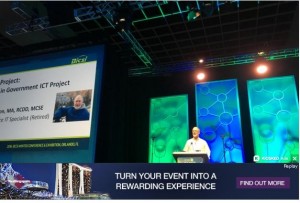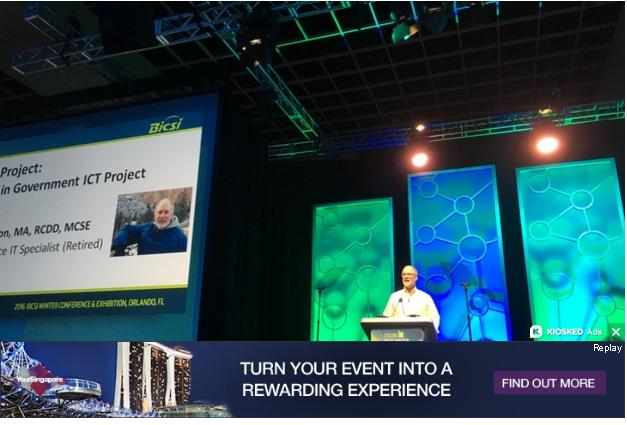
You might think that a niche conference on cabling design and installation held in Orlando in February would be a sleepy little affair, but I found just the opposite to be true.
The table setter when I arrived was a humorous/informative look by Ekahau’s Jussi Kiviniemi at designing Wi-Fi networks for high capacity. The presenter compared such network installation and design to that of setting up a bar, but also made pointed observations about the conference center’s own imperfect Wi-Fi installation history.
The next presentation (“The Moose Project: What Went Wrong? An ICT Case Study from the National Park Service”) was as fiery a talk at a tech conference as I’ve ever heard. Recently retired National Park Service IT specialist Michael Thornton emphasized that he didn’t want to “bash anybody or point fingers” over what he described as a systemic problem with architectural, engineering and construction (AEC) projects, but at the same time he is urging fellow members of the information and communications technology field (ICT) to rise up and convince organizations that ICT pros need to be included in project plans from the start – or else risk botching those projects and wasting millions of dollars.
Thornton, a Registered Communications Distribution Designer (RCDD) who has designed, installed or managed more than 100 ICT projects in Yosemite, Denali and other national parks over 20 years, began:
“How many of you have been frustrated by communications over ICT projects? Frustrated with the rest of the project team, frustrated with the [architecture & engineering (A&E)] team? How many projects have you had where you came away shaking your head and thinking man if they had only brought us in sooner? If only they had brought us in sooner we could have given them a much better solution for this project in their project budget.”
Such problems have “plagued us in ICT since the beginning of the modern age of computers,” the 20-year ICT veteran said. A&E workflows have been ingrained within the cultures at some organizations since before ICT even emerged, he said. It’s up to the ICT industry now to help these organizations help themselves and get out of their rut, said Thornton, describing his presentation as “an objective critique.”
To illustrate his point Thornton took attendees behind the scenes at one federal civilian agency, the 20,000-employee National Park Service, to show how it manages A&E projects. More specifically, he took us inside the Moose (Wyoming) headquarters of Grand Teton National Park, which like the other more than 400 national parks and sites relies heavily on information technology in offices and in the field – “and that means they’re all heavily reliant on ICT, doesn’t it?”
As he pointed out, NPS real estate includes some 24,000 buildings, at least a third of which by his estimation are equipped with computer/network infrastructure of some sort, including some increasingly multimedia-heavy visitors’ buildings. The Park Service is connected nationally by a WAN farmed out to Verizon Business Network Services through the Department of the Interior, though communications and power within parks varies widely, with front country buildings often hooked up with fiber or 802.11 WLAN technology and back country buildings supported by contracted satellite services or whatever is available in that terrain.
Within the Park Service, Thornton said “the culture divides ICT pretty strictly from the professional services for A&E project management,” so you have architects, landscape architects, engineers and project managers focused on projects, whereas the full-time ICT people – IT and telecom specialists, radio technicians, etc. – are dedicated to ongoing operations. ICT designers, telecom project managers and ICT infrastructure experts are rare, said Thornton, who was an exception. An outfit called Denver Service Center serves as the central planning, design and construction management project office for the NPS.
Moose, Wyoming: So much more beautiful than the project discussed by Michael Thornton at the BICSI conference
The resulting state of ICT infrastructure within the parks is “not in that great a shape overall” because it isn’t done through A&E projects, but rather on an ad hoc basis by in-house electricians and IT or telecom specialists, Thornton said.
“As an ICT professional I look at it and I think this stuff’s like a bumblebee – it shouldn’t fly, but it does,” he said.
2 mins read
RETIRED IT SPECIALIST SHARES INSIDE STORY OF BOTCHED NATIONAL PARK MOOSE PROJECT








